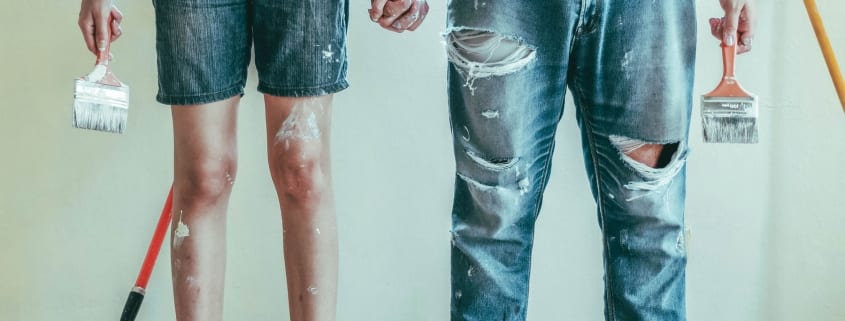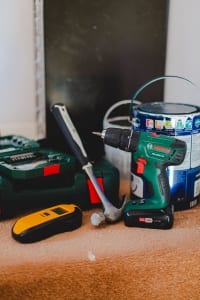Practice Safety When DIY-ing
These days many of us are spending more time at home and finding new, creative ways to enhance our living space. Tackling do-it-yourself (DIY) projects for the home can be fun and cost-effective, so why not roll up those sleeves and get started! Whether you’re painting the front door with a fresh hue or finally upgrading those patio lights, successfully completing a DIY home project is incredibly satisfying. But many of these projects do not come without risks. Here are a few safety tips to keep in mind as you get to work.
- Start by selecting a designated work area. The amount of space you’ll need will depend on the size and scope of your project, but make sure you have adequate lighting and ventilation (if necessary). Required tools and equipment should be located in your workspace and organized for easy access.
- Personal protective equipment (PPE) is your friend. We know you’re a pro but investing a few bucks in PPE is essential for most home projects. Stock up on safety goggles, dust masks, ear plugs (or noise reduction ear protectors), gloves and any other kind of protection you’ll need for your project. Remember to wear appropriate clothing and shoes. (Ditch the sandals for this!)
- Work slowly and clean as you go. When you rush through a DIY project, you’ll likely end up with less desirable results than you intended, or worse, you could make a costly or dangerous mistake. Take your time and remember that you are in control of the project. You should also clean as you go to ensure a safer workspace. Pick up any scrap materials, tools that aren’t in use and any tripping hazards.
- Be cautious with power tools. Annually, 8% of electrocutions in the U.S. are attributed to improper use of power tools. The Electrical Safety Foundation International offers the following safety tips:
-
- Use ground fault circuit interrupters (GFCIs) with every power tool to protect against electrical shock.
- Never use power tools near live electrical wires or water pipes.
- Use extreme caution when cutting or drilling into walls where electrical wires or water pipes could be accidentally touched or penetrated.
- If a power tool trips a safety device while in use, take the tool to a manufacturer-authorized repair center for service.
- Do not use power tools without the proper guards.
- When using a wet-dry vacuum cleaner or a pressure washer, be sure to follow the manufacturer’s instructions to avoid electrical shock.
Remember, you should only tackle DIY home projects within your skill and comfort level. For projects that require extensive electrical work, we strongly recommend you hire a licensed, qualified electrician for assistance.
To learn more about electrical safety, visit our website at everydaysafe.org.





